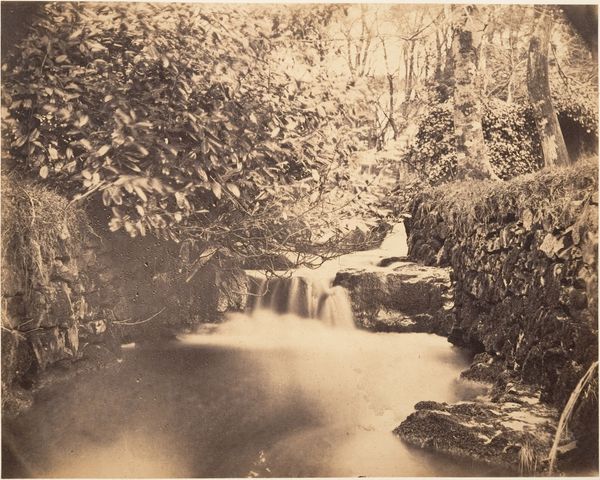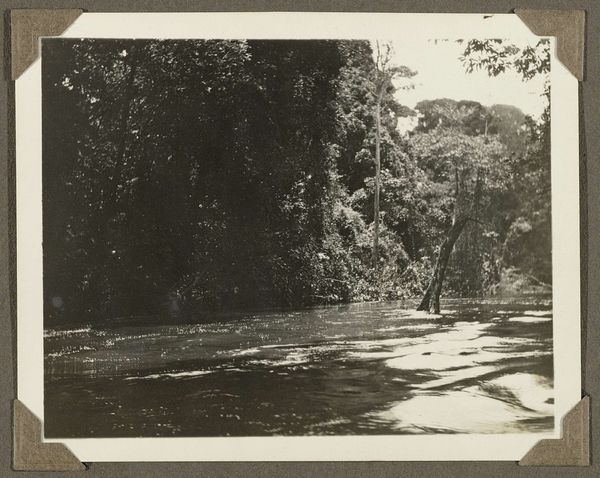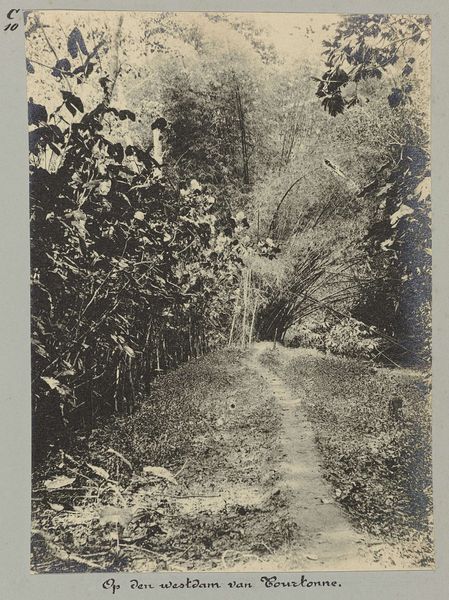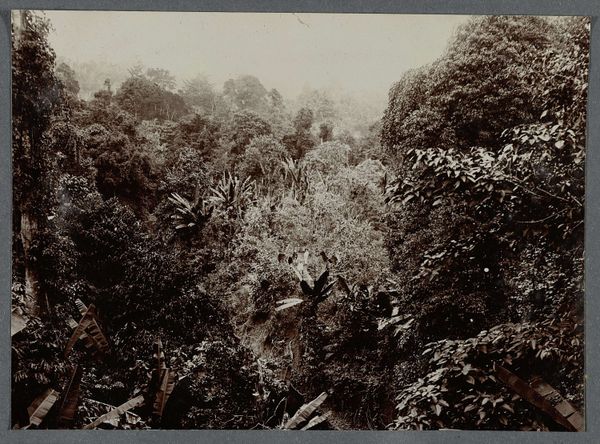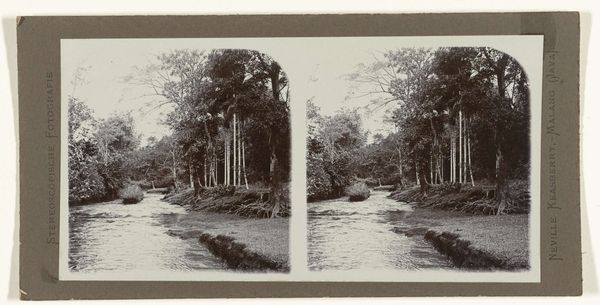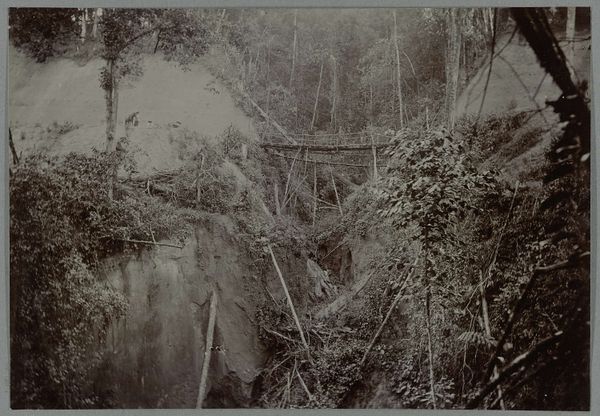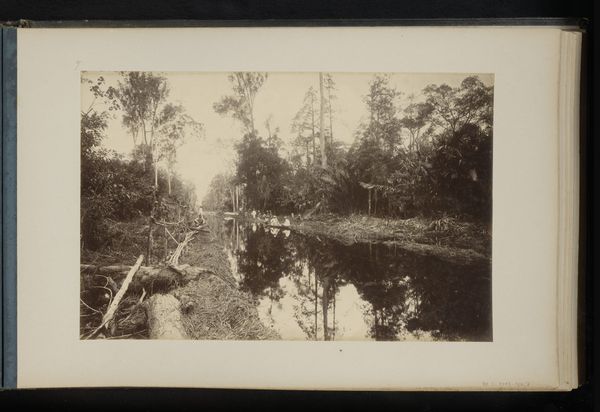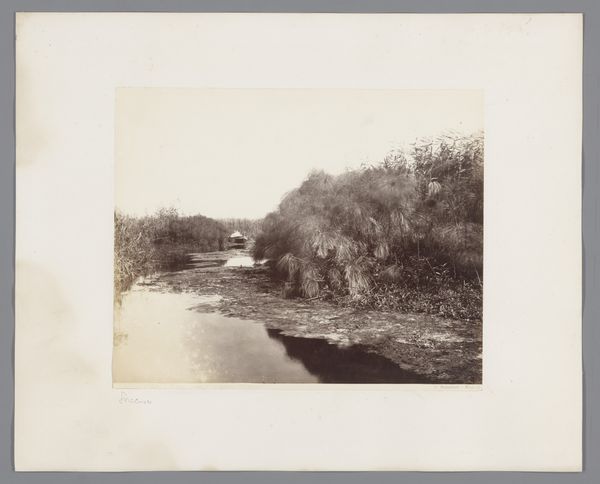
print, photography, gelatin-silver-print
#
photo of handprinted image
#
organic
# print
#
organic shape
#
landscape
#
street-photography
#
photography
#
gelatin-silver-print
#
watercolor
#
realism
Dimensions: height 82 mm, width 111 mm
Copyright: Rijks Museum: Open Domain
Curator: Here we have Hendrik Doijer's "Kreek," a gelatin silver print created sometime between 1903 and 1910. What’s your first take on this image? Editor: It feels…humid. Dense. The reflections in the water give a sense of palpable weight, almost like the air itself is thick with moisture. It’s definitely evocative. Curator: Indeed. Doijer was active in the Dutch photographic scene, which at the time was grappling with defining itself as separate from painting while responding to societal changes through urban documentation and, as we see here, explorations of nature. This is more pictorialist in my mind. Editor: Absolutely. The printing process is key. The gelatin silver print allowed for incredible tonal range, creating these almost watercolor-like effects. I imagine the labour involved in this printing, meticulously coaxing the image from the negative. It really collapses the distance between high art and craft in some interesting ways. Curator: That is true. And you know, that interplay between sharp detail and soft focus would have resonated strongly with contemporary debates about photography's artistic merit. Was it a scientific tool or capable of capturing something more ephemeral? Its exhibition history reflects that ongoing negotiation. Editor: I’m also drawn to the texture of the paper, which is barely perceptible online but surely gives an impression of how the print behaves as an object. Curator: Thinking about Doijer’s influences in the historical context, the Symbolist movement surely shaped his sensitivity towards landscape. We shouldn't neglect those influences coming to bear on these early photographic methods. The ambiguity becomes part of the effect. Editor: The emphasis on organic form definitely highlights that idea! Considering materiality really pulls back the curtain on that pursuit of ‘pure art’ separated from its means of production. The paper stock, the chemistry of the developer, all that infrastructure comes into play in these seemingly delicate details. Curator: These layered readings give depth. Ultimately this photograph challenges simple categorization, and in doing so becomes richer. Editor: Absolutely! Looking at this image closely connects us not only to Doijer’s vision but the material processes that give it tangible form and deeper historical understanding.
Comments
No comments
Be the first to comment and join the conversation on the ultimate creative platform.
